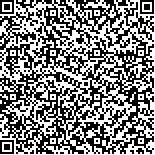下载中心
优秀审稿专家
优秀论文
相关链接
摘要

本文主要是探索Landsat TM数据不同辐射校正方法对土地覆盖遥感分类的影响。介绍了使用的3种不同辐射校正方法(ATCOR3、FLAASH以及查找表)和两种分类算法。在分类实验部分,根据样本的地理坐标在3景校正影像中分别采集训练样本并训练各自的分类器,并交叉用于其他辐射校正影像的土地覆盖遥感分类。实验结果表明:(1)用于分类器训练的样本采集自待分类影像时的分类精度明显高于采集自其他影像的分类精度;(2)3种辐射校正影像的分类结果存在差异,其中使用ATCOR3和FLAASH方法校正后影像的分类结果有更相近的精度;(3)辐射校正对分类类别的影响不同,其中对森林类型影响最大,对裸地等其他类别影响相对较小。
Radiometric correction, which is often used as a preliminary step for remote sensing classification, is required in the efficient extraction of land-cover information from remote sensing images, particularly in areas with rough terrain. The objective of this study is to examine the effect of different radiation correction methods of Landsat TM data on land-cover remote sensing classification. Three different radiometric correction methods (ATCOR 3, FLAASH and Look-Up Table (LUT)) were introduced, and the Maximum Likelihood Classifier (MLC) and Support Vector Machines (SVMs) were used for classifiers. The training samples were selected from three corrected images based on geographical coordinates and classifier training to classify the three corrected images mutually. The results indicate the following. (1) The samples selected from the classification image for classifier training significantly improve classification accuracy compared with the samples selected from other images. (2) The classification results of the three radiometric correction images are different, whereas the results of the ATCOR3 and FLAASH methods are similar. (3) The effect of radiometric correction on the classification accuracy of each category is different: radiometric correction affects "Forest" significantly and other categories variably.

